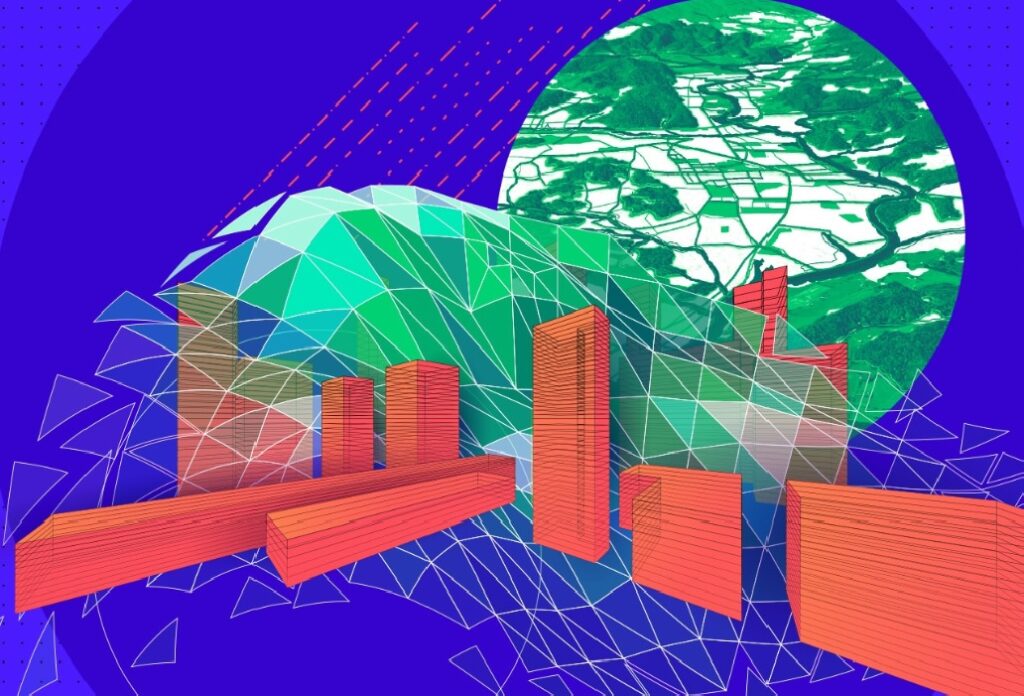In August of last summer, in Portland Maine, I wanted to know if people were interested in the idea of transformations systems mapping and analysis. So, I brought together leaders in Blue Marble Evaluation as well as experts in systems mapping for a design charrette on this topic – and to see if anybody cared, and if so, what should we do. One of the attendees was Rob Stauder a long-time employee (20-years+) at Esri (now working at Jacobs Engineering Group). If you have not heard of Esri, you should because I believe they are central to the future of Blue Marble Evaluation. For the past 50 years, Esri has quietly been leading the way in how we map, see patterns and understand systems of systems. They are widely known for developing geographic information system (GIS) software, web GIS and geodatabase management applications among many other exciting new services.
Back to the Design Charrette in Portland… over a few finely crafted local IPAs, we went deep into the potential for transformations systems mapping – by applying the principles of Blue Marble Evaluation, working at the scale of bioregions on pathways towards regeneration. Rob said, you really need to present this at the Esri Geodesign Summit. I said – ‘What’s that?’ He explained that it is one of the most important events Esri hosts each year. Actually, I had met the CEO of Esri years ago as Jack Dangermond and I worked on real-time exhibitory for the National Aquarium in Baltimore back when I directed the Conservation Program there. I knew Esri hosted huge GIS-user meetings every year in San Diego but I was unaware of the summit. Yes, he said, this is the cutting edge of the Esri world and would be ideal for transformations systems mapping.
So after submitting the concept, the Geodesign Summit staff lead, Ryan Perkl contacted me and invited me to give a keynote on the topic. I mentioned the partnership work we are doing with the Capital Institute and the Regenerative Communities Network and he encouraged a proposal by Stuart Cowan – which was also accepted. So last week, on Tuesday February 25th, Esri CEO Jack Dangermond opened the event with a 40 minute tour-du-force and spoke eloquently about the need for seeing transformations systems:
“I would assert that the fundamental technologies of geography and GIS, are emerging into a design science that supports transformation built on the platform of Geodesign”.
He continued with a really big idea,
“Our world, needs a kind of nervous system. An intelligent and responsive platform that, like your brain and your central nervous system, senses things and cognates and understands and then more intelligently responds.”

Jack Dangermond Esri CEO delivering the opening Keynote at the 2020 Geodesign Summit
On the second day of the Summit, Stuart and I delivered back-to-back keynote address to the full attendees of the Geodesign Summit. My talk introduced the concept of transformations systems mapping based on the principles of Blue Marble Evaluation and built directly from Jack’s idea of a nervous system for the world to better respond in the Anthropocene.
Stuart’s talk was on the application to the Regenerative Communities Network which was magnificent. The tag-team presentations were very well received and emphasized the overarching principles of Blue Marble Evaluation as a way to guide learning and adaptation. The central nervous system, I noted in my talk, was beautifully envisioned about 60+ years ago in the concept of the “World Game” first developed by Buckminster Fuller. We are reimagining this idea in far greater detail as we now have the technology and data infrastructure able to support this big idea.
Below are a few of the slides from my talk.









So, from an idea developed over cold beverages on the shores of the Gulf of Maine – to a keynote presentation engaging some of the world’s most visionary thinkers and mappers – we may have just launched a big idea, with Blue Marble Evaluation guiding the adaptive learning! If you would like to be involved – please contact me!


